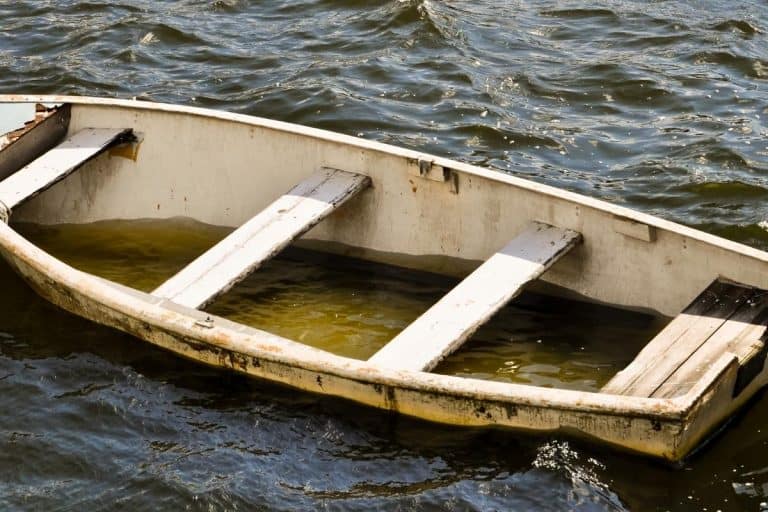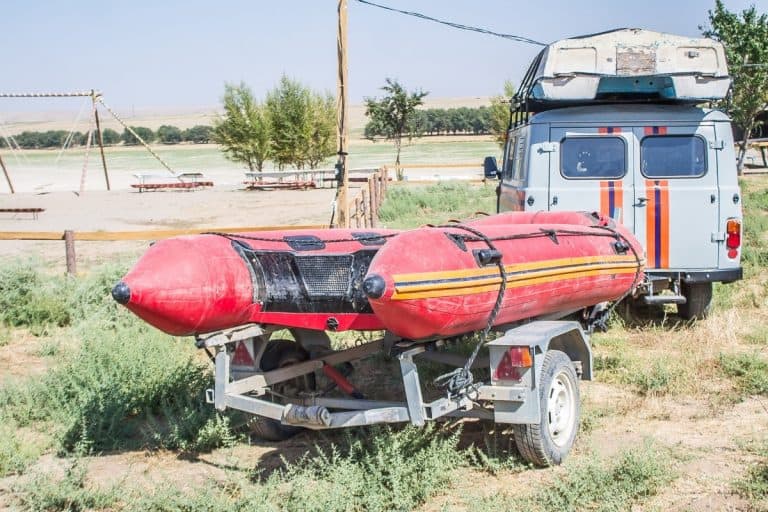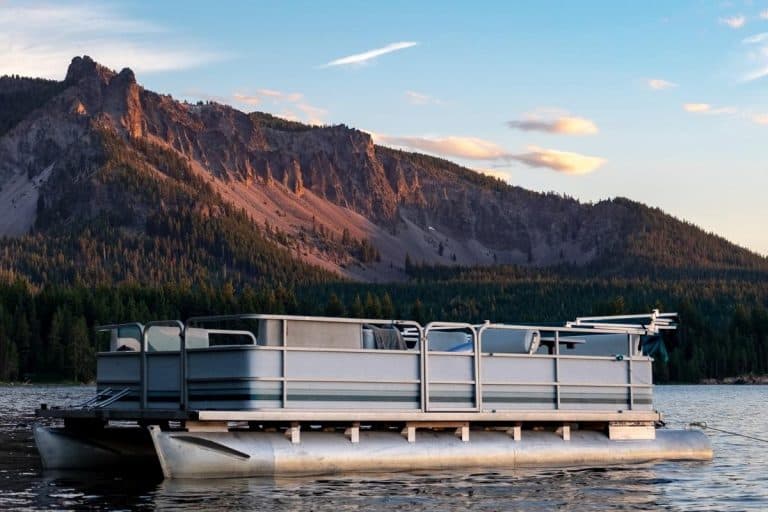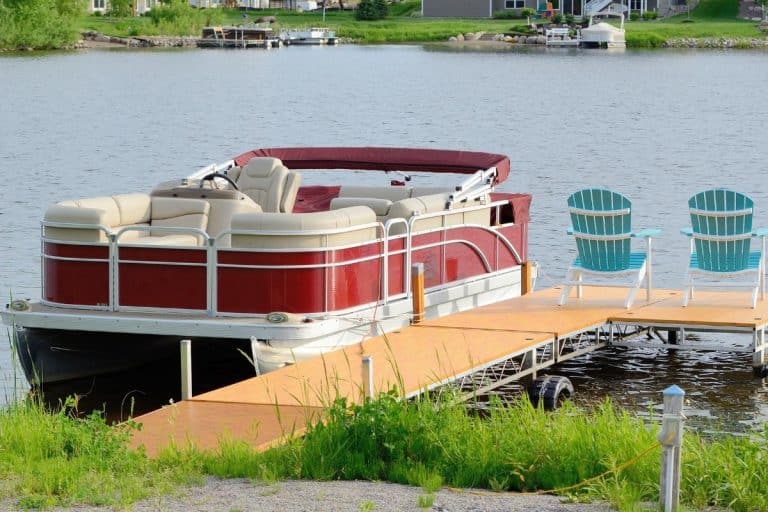What Should a Boat Operator Do When Approaching a PWC Head-On?

When driving your boat, if you get too near a personal watercraft (PWC), how are you supposed to handle it? In today’s article, that’s precisely what I’ll discuss.
What should a boat operator do when approaching a PWC head-on? When approaching a PWC head-on, a boat operator should turn to the right, as should the PWC operator if neither is the stand-on vessel. For less maneuverable boats such as a sailboat, the PWC operator should move to the right while you should stay your course, as they’re the give-way vessel.
This article will take you through all sorts of potential scenarios that can occur when operating a boat and how to handle them to prevent accidents and injuries for both parties. This info could just save your life, so you won’t want to miss it!
Here’s What a Boat Operator Should Do When Approaching a PWC Head-On
Let’s begin by talking more about the issue from the intro. You’re driving your boat when you see a PWC such as a jet ski in the vicinity.
There’s a good distance between you two, so neither of you slows down yet. As the seconds pass by though, it’s becoming clearer that you’re both heading for the same destination and no side has budged.
If nothing changes, you’re about to collide head-on with the PWC, which is the last thing you want. What do you do?
That depends on whether you’re the stand-on vessel or not.
Allow me to explain. A stand-on vessel is one that must maintain its speed and course while the give-way vessel can easily maneuver out of the way.
Thus, in a situation where neither your boat nor the PWC is considered the stand-on vessel, then you can both navigate to the right on your starboard side.
This will provide enough space for you to give way to the PWC and them to give way to you so that you can both avoid a collision.
Now, what about in instances where you are the stand-on vessel, such as when operating a sailboat?
Then, as mentioned before, you would maintain your speed and your course.
It’d be the PWC operator’s responsibility to know that they are the give-way vessel in this scenario and that they should move to the right.
If that doesn’t happen, then obviously, there would be a significant accident considering you never lowered your speed or changed your course. However, you would not be at fault for the accident.
What About Head-on Approaches with a PWC But at a Slower Speed? What Should a Boat Operator Do Then?
Here’s another scenario that could take place when you’re out enjoying time on the water.
You’re in your boat and you see a PWC from the distance. This time, neither of you is going at a very fast pace. Perhaps, for you at least, you’re just in the mood for a relaxing, leisurely boat ride.
You’re not sure why the PWC isn’t racing as fast as it can, but it isn’t. Maybe it’s having mechanical issues.
Nevertheless, once again, you and the PWC are approaching one another head-on, just not nearly as fast as in the first scenario. How do you handle matters this time?
This one is a lot easier. Since neither you nor the PWC operator is driving your respective vessels particularly fast, you should have ample time to navigate out of the way.
If you are the stand-on vessel and the PWC is the give-way vessel, then the rules don’t change just because you’re not boating at top speeds. They should still turn right to give you room to pass.
They can just do that well in advance because you’re not approaching head-on very quickly.
Should you be in a situation where neither is the stand-on vessel, then that makes both your boat and the PWC the give-way vessel.
You know what that means – give way! Turn right and the PWC operator should do the same.
As was the case before, due to the reduced speed you’re operating at as well as the PWC’s slower speed, moving right without any risk of a head-on collision is very much doable.
What Should a Motorboat Operator Do When Approaching a Sailing Vessel Head-On?
Now let’s switch gears and discuss a scenario that could transpire on the water and thus requires some preparation.
This time, you’re driving a motorboat, which is also known as a powerboat or a speedboat. Perhaps you’ve been driving a motorboat all this time, but in this example, that’s definitely the case.
You’re not approaching a PWC head-on this time, but rather, a sailing vessel such as a sailboat. Now what?
Well, you already know that a sailboat has less maneuverability compared to your motorboat, or at least less speed in maneuverability.
That means that between you and the sailboat, your motorboat is the give-way vessel, and the sailboat is the stand-on vessel.
The sailboat should continue on its course and not slow its speed whether it was traversing the water quickly or slowly.
You should, if you can, slow down your speed so you can safely turn to the starboard (or to the right) and avoid a head-on collision.
In any case where you’re the give-way vessel and the other boat or PWC is the stand-on vessel, you should handle the matter the same way.
The Risks of Colliding with a PWC as a Boat Operator
Operating a boat is a lot like driving. In most situations, only one boater has the right of way.
If you fail to realize that and you hit a PWC as a boat operator, here’s what could happen.
Injuries and Possible Fatalities
Your boat will not collide directly with the PWC like you might imagine in your head.
Instead, as the boat and PWC meet, the force of the collision will send your boat over the PWC and on top of it.
The boat will not go inside the PWC.
The PWC lacks enclosures, hulls, and other protective features that would safeguard it during a collision.
It’s just a boat on top of people. The operator of the PWC could be very seriously injured, as could any passengers on the PWC.
These people could also perish, and not necessarily from drowning, but from the serious injuries sustained during the collision.
Post-Traumatic Stress or Survivor’s Guilt
In the aftermath of a grisly collision between boat and PWC, you might have survived, but at what cost?
If you were the sole survivor of the collision, then you could be left to wrestle with survivor’s guilt.
Survivor’s guilt can leave you with mood changes, feelings of helplessness, anxiety, depression, sleeping difficulties (and nightmares when you do sleep), lack of motivation, mood changes, and even suicidal ideation.
You could also experience post-traumatic stress disorder or PTSD.
You might have constant flashbacks and memories of the boating accident, nightmares about it, and mood changes. You could feel hopeless, anxious, depressed, detached, or simply numb.
Physically, you might struggle to concentrate and sleep.
Both conditions are manageable with professional treatment.
Lawsuits
What if a few people on the PWC made it out alive? Once they begin recovering from their injuries, they might decide to sue you.
That said, the other party only has a case if they can prove that you behaved negligently on the water.
If you were supposed to be the give-way vehicle but weren’t for any reason, then that could count as negligent behavior.
Usually, in these types of lawsuits, the PWC victims would sue for pain and suffering, property damage to their boat, and medical bills. You could also be sued for lost income.
Even if you can prove that you weren’t negligent in the accident, a lawsuit is the last thing you’ll want to have to deal with after a boat crash.
Cases can get dragged out for months, so you’d have this hanging over your head for quite a while.
The financial toll of a lawsuit–considering that you might have had to pay for your own medical bills as well as your own property damage–can leave you with money troubles that will outlast any injury from the collision.





